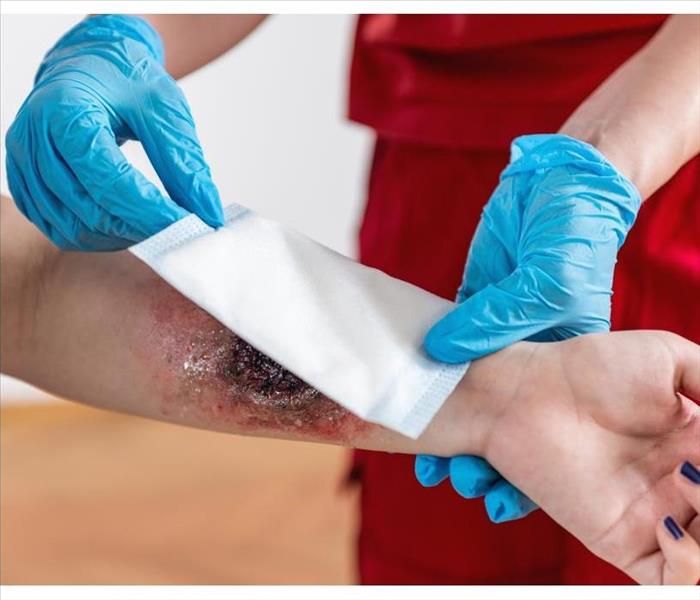How To Properly Treat A Burn
10/10/2022 (Permalink)
Basic Tips for Dealing With Burns
If you've ever had a bad burn, you know that it's more than just an inconvenience. If the skin is broken, it can become infected and lead to serious complications. Knowing how to treat burns quickly and correctly can mean the difference between minor irritation and major injury. So here are some basic tips for dealing with burns:
Cool down the burn.
Cool the burn. If you have a first-aid kit at home, it will probably have an ice pack or another method of cooling the burn. If you don't have one, cool water works fine. Use cool water on any burn; do not use ice or butter or grease—these can cause injury by freezing the skin or trapping heat in the area and can irritate your skin. Also avoid using lotion or ointment on a first-degree burn because these will trap heat and make your burn worse.
Remove jewelry and tight clothing
Remove jewelry and any tight clothing that might be near the burn. These things can easily cause irritation to the affected area and even increase the damage done on your skin. Remember to not apply any heat to the burn as it could increase damage to the tissue and delay healing.
Cover the burn
Apply a thin layer of antibiotic ointment around the burn. If you do not have antibiotic ointment, apply Vaseline instead. Do not use lotions or creams because they may trap heat inside the wound and cause more damage than good.
Cover the burn with a sterile gauze bandage. Sterile gauze can be found in any hospital or medical supply store. Do not use fluffy cotton balls, as the cotton can easily get stuck and trapped in the wound.
Leave the dressing on until pain is gone. It is common to see blisters formed after a burn. Don't cover with a plastic bag! The bag will trap moisture from your skin underneath it, which will further damage your skin and increase the risk of infection.
Seek medical treatment
After suffering a major burn on your skin, it is important that you seek medical treatment as soon as possible so that any damage done by the burn can be treated properly. The main goal of treatment is to prevent further damage to your skin and help it heal more quickly so that scarring will not occur.
Burns can be scary, but with the right treatment, you can quickly get your burn healed and back on your feet. Skin burns are very common in everyday life and can occur due to a variety of reasons. They can be caused by heat, chemicals, electricity, or radiation. Burns can also be caused by exposure to sunlight or ultraviolet rays. Skin burns are usually minor and are not life-threatening, but they can cause serious injury if not treated properly. If you have suffered a minor burn on your skin, follow the steps above to aid the healing process. If you are ever involved in a fire or any other situation where you feel your skin has been exposed to extreme heat, please seek medical attention immediately.






 24/7 Emergency Service
24/7 Emergency Service
